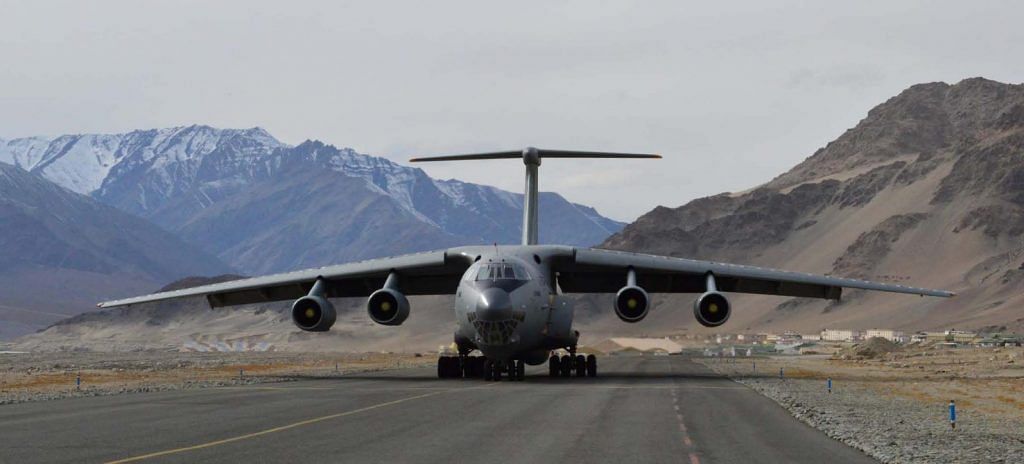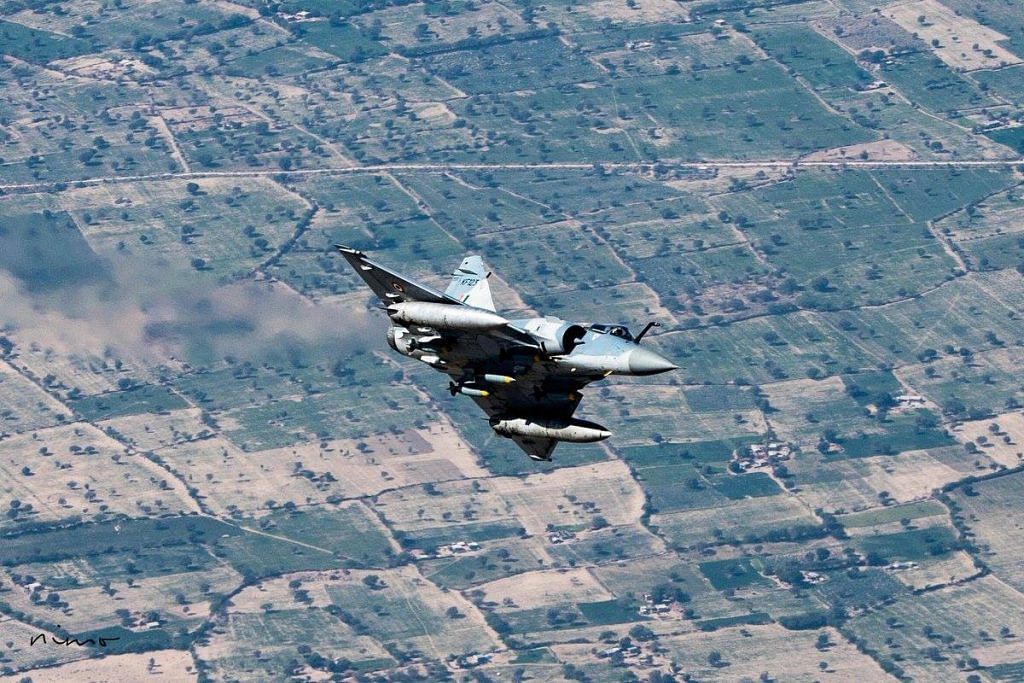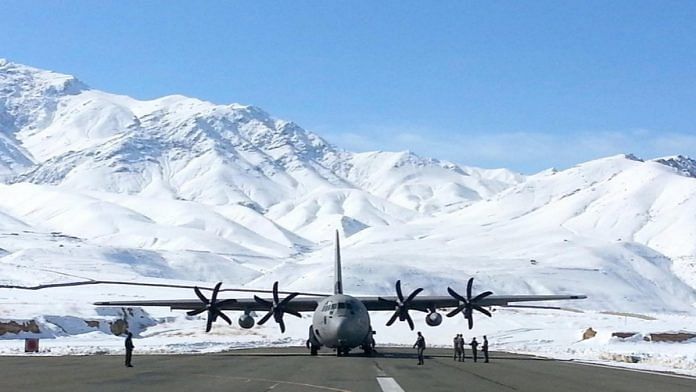The 87th anniversary of the Indian Air Force is on 8 October. It is an important milestone for a Force that makes a difference when needed. The strength of the Indian Air Force is exploration and innovation to maximise effectiveness. Fortunately, every Indian government has supported its initiatives with little interference. The Air Force brings ingenuity, be it during the Kargil War or the Balakot airstrike, and injects an element of surprise with remarkable precision. Its new innings begins in 2020 under Air Chief Marshal Rakesh Kumar Singh Bhadauria. I look forward to the Air Force becoming more modernised and being run in a sleek, efficient and ‘corporate’ manner.
British India to independent India
The Indian Air Force has come a long way, from having a few Wapitis in 1932 when India was a British colony to becoming a strong, modern instrument of airpower today. The British did not want their colony to have attack capabilities, so, the air force in India was limited to air observation and patrol. Few Lysanders of No. 1 Squadron of then Royal Indian Air Force were sent on the Burma campaign in 1942 for tactical reconnaissance. But the momentum of World War II took over. Soon, their airfield at Lashio was attacked by Japanese fighters. Angered by this, the Indian Squadron, on its own, slung two 250lb bombs under the wings of the ungainly Lysanders and dropped these over the Japanese airfield at Mae-Haungsaun from where the strike had come. That made a difference to the morale of the personnel and the tempo of operations.
The spirit of the fledgling Air Force of independent India made a difference again in 1948 when the Tempest and Spitfire fighters attacked Pakistani intruders at the outskirts of Srinagar airfield and saved it from being over-run. Six Dakotas, the only fleet of IAF transport fleet, flew some 700 missions moving 1,000-tonne supply from Srinagar to Leh. This helped the Indian Army stop the Pakistani advance beyond Skardu. It was the ability of our Air Force that ensured Kashmir and Ladakh were retained by India.
Also read: The British were so impressed by Indian WWI aviators that they gave India its own Air Force
Bhadauria takes over
The new decade of the Air Force starting in 2020 will be led by Air Chief Marshal Rakesh Kumar Singh Bhadauria as the Chief of Air Staff. He has vast experience and is known to be a cool professional. Outgoing Air Chief Marshal B.S. Dhanoa’s last ride on the Mig-21 symbolised the retirement of the venerable Mig-21 Fleet that has served the nation since 1963. It also signalled India’s shrinking combat inventory. Newer operational systems that are far more potent will start rolling in, but slowly.
The Air Force’s approach to modernisation is quite balanced. The new induction covers the entire width of capabilities. Important ones to mention are the Rafale, the Chinook, the Apache, the HAL light combat helicopter, indigenous air defence weapons, sensors, systems and advanced command, communication and intelligence centres. Production of the Light Combat Aircraft (LCA) and new helicopter variants has been accelerated.
We expect the next Chief of Air Staff to be poised to meet new challenges. It is significant that the first Rafale jet from France was accepted by India on the same day Bhadauria’s appointment was announced. Bhadauria, as the Deputy-Chief, had initiated and done important work on the induction of these and also test-flew the LCA during a crucial phase of its development.
The IAF has developed as a strong and professionally credible force over the years. It is the spirit and devotion of the Air Force personnel, who came from every corner of the country, freely exercising their minds and skills, that made it possible. They cast away differences of religion, language, caste and creed and are unified as ‘one family’ and have one purpose – to touch the sky with glory. The uniting spirit and loyalty are almost regimental in nature, though the Air Force is not organised into regiments like the Army. Loyalty to the Air Force flag and the Constitution of India have driven the IAF through thick and thin. It is not possible for any single leader with a fixed tenure of maximum of three years to achieve long term goals, but decades of solid effort by all personnel have brought the Indian Air Force to where it is.

Also read: Air Marshal Nambiar, Kargil hero famous for jugaad in combat should have been IAF chief
The Balakot airstrikes
The IAF built capabilities and trained to carry out missions with a complex force, and this was demonstrated by the Balakot strike in February this year. The mission involved thousands of Air Force personnel, a variety of forces and disciplines, skills on ground and in air, in which at least three of the Air Force geographical commands participated at short notice with a high degree of secrecy and speed. The orchestra consisted of a variety of instruments such as aerial tankers, airborne warning and control system (AWACS), transport support, helicopters, a variety of combat aircraft, air defence weapons, ground crew, radar controllers and more. All came together to carry out a single mission on a pitch-dark night.
The Balakot operations have shown the way for future air operations – short and swift, with the potential to cause substantial damage to the enemy’s warfighting potential. There is no scope for mistakes or errors in their mission.
The exchange ratio in the aerial engagements that followed post-Balakot between India and Pakistan was just about 1:1, whereas the aim should be at least 3:1, if we want to maintain our offensive capabilities. We cannot afford to lose aircraft or crew. Aggressive posture, smart tactics and hard training will ensure there are no weak links. The loss of a helicopter and crew illustrated the challenges that the leadership faces in managing a very complex air operation with zero tolerance for failure – human or technical.
Personnel as strength
The most important element of the Air Force is its personnel – of all ranks and branches. Each individual has his or her own mind and skillset but work together. Over the years, the military has started being seen as a government job in India – with assured promotions and extended retirement age. While the inventory of combat aircraft has come down, the number of officers at senior ranks has swelled.
The Air Force accepted the recommendations of the Ajay Vikram Singh Committee, and that created more vacancies. Higher ranks were distributing more responsibilities, and work had to be ‘created’ since they didn’t exist. The steps were taken primarily to extend the retirement age. At international military meetings, we find that Indian officers are at least one rank higher than those who work at similar levels in the US or the UK. An essential way to improve the quality of leadership is to permit early retirement of an officer who wants to leave and allow skilled officers to move up. It is a fallacy to believe that the Permanent Commission holds till death-do-us-apart.
The Air Force depends on the skill of its personnel and their motivation. We expect an Air Force officer to land on the moon in a few years. Every vertical within the service needs professionals who are specialists. Authorities are urged to consider sending promising personnel to universities for post-graduation and PhDs on relevant subjects. Verticals must only be headed by appropriately qualified and experienced officers. It would not be wise to follow a policy of on-the-job-training for senior positions. Career planning is, therefore, critical.
Those below the officer rank must have access to higher education and upward mobility through suitable selection and training methods. This was successfully tried before but given up because it caused discomfort for some. The Army has initiated action along this line recently – a positive effort that could be emulated.
Suitable processes could be evolved for personnel to move from one branch to another voluntarily and by selection. The IAF gets opportunities to train and interact with foreign air forces, it should also learn from them and evolve. We have not changed much for the last 72 years when it comes to personnel management.

Also read: Indian Air Force should drop its plan to make more Tejas Mark-2s & focus on AMCA fighter jets
Chief of Defence Staff debates
In the middle of shrill, unending debates and sermons on integrated commands and the Chief of Defence Staff, the rumour that the Air Force is not cooperating with military re-organisation is untrue.
The Indian military still thinks traditionally and sees the Air Force primarily as a provider of air support to the other two combat arms. While offensive air support is very important, there are many other missions that the Air Force performs. While each of the services is expanding their capability, the Navy and the Army have continuously demanded their own air-arm. This demand is global and not restricted to India. Our pains are greater because we have only had 72 years of experience, whereas others have had a couple of century-worth of experience.
Some of the core issues are:
1) The limited scope of the Army and the Navy expanding air cadre vertically for career progression. There is a risk of a large cadre influencing further expansion of one element that could warp the balance of the Force that has a finite budget. National security demand and strategy would define the size, composition and scope of the Forces.
2) An expanded inventory would require maintenance facilities, supply chain management and greater manpower. It would also need expanded operational support like the aircraft carrier needing escort ships, logistics ships and enormous base-facilities. A challenge to affordability.
There is no simple answer to the woes; the only limitation is cost and complexity. Managing manpower is harder than managing complex machines. Militaries across the globe are finding ways and means to reduce military expenditure and size. We must appreciate the Army exploring Integrated Battle Groups, which promises to extract greater operational value and optimise manpower. The current defence Budget is minuscule and cannot meet all the requirements. Should we wait until India becomes a $5-trillion economy? The budget issue could well be addressed by the first CDS of India.
The Air Force, while not totally rejecting the CDS as a single-point adviser to the government, agreed with the Naresh Chandra Committee Report that recommended the centralisation of non-operational functions in the CDS. This would amount to transferring the Chairman of the Chiefs of Staff Committee’s functions to the CDS. The title is not important. The proposal indicates that managing the military (planning, budgeting, routine maintenance, procurement, induction programmes, interface with PSUs and industries, legalities, education, etc.) takes a lot of energy and time away from operational training and preparation. So, it would be appropriate for the operational functions to be retained by the current Chiefs.
Also read: General Rawat is front-runner for CDS but all he talks about is cosmetic changes in military
A fresh attitude
We got our Independence 72 years ago, but the attitude towards governance and management of the military is still archaic. Those who carry strategic decisions on their shoulders 24×7 ought to be professionally well-informed. The need of the hour is a change in the mindset of those who govern the military.
Bureaucracy is the 72-year-old symbol of a colonial structure that worked for a ‘master’. Now, we need a more ‘corporate mode’ of governance managed by professionals who would define objectives and strategy, make ‘business plans’ based on the budget and necessity, and create excellent verticals, but not silos. Most importantly, performance must be continuously monitored and audited for quality. An important driver would be accountability at all levels. These are essential to win a war and keep the country safe.
Our congratulations to the Indian Air Force on its 87th Anniversary and we wish them the very best in their endeavours. We are confident that the Indian Air Force will continue to touch the sky with glory in the years to come and make a difference.
The author is former chief of Indian Air Force. Views are personal.




If i was prime minister i would have brought latest fighter jets, bombers, attack helicopters in large numbers; privatized defence industry; ended socialism.
That’s why you are not prime minister..